
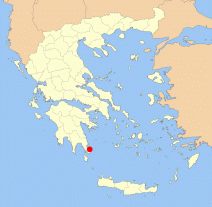 Monemvasia, or Malvasia, is one of those places where you never get tired of coming back. Even though it became a very popular destination crowded with tourists, it has maintened its character and a charm which is rare to find in other places in Greece. It’s not by chance that it is the most visited Greek medieval city.
Monemvasia, or Malvasia, is one of those places where you never get tired of coming back. Even though it became a very popular destination crowded with tourists, it has maintened its character and a charm which is rare to find in other places in Greece. It’s not by chance that it is the most visited Greek medieval city.
[sam id=”7″]
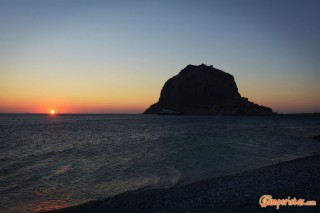
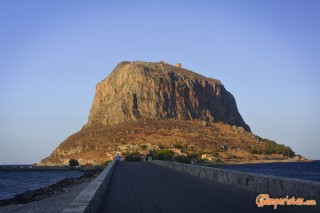 The fortress of Monenmvasia is a spectacle in itself . The causeway to get there, the entrance to the fortress, the narrow streets, everything make you feel like you’ve stepped into a fairy tale.
The fortress of Monenmvasia is a spectacle in itself . The causeway to get there, the entrance to the fortress, the narrow streets, everything make you feel like you’ve stepped into a fairy tale.
I advise big RVs to avoid driving up to the fortress entrance during the daytime, as it could be very tricky to maneveur and turn back.
You’d better leave your car at the parking area indicated below and walk or bike the 2 km to the fortress, you can also move to the parking area at the foot of the fortress and save 500 meters of walking.
There is also the option of taking the shuttle bus that connects the mainland to the fortress. It runs every twenty minutes departing from the entrance of the causeway and it costs one euro per person.
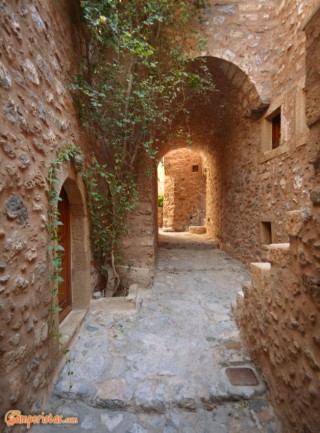
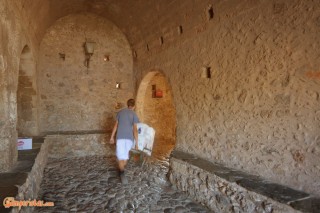 The entrance to the fortress. Still today everything is carried by hand or at the most transported upon the backs of animals because vehicular circulation through the city’s narrow streets is impossible.
The entrance to the fortress. Still today everything is carried by hand or at the most transported upon the backs of animals because vehicular circulation through the city’s narrow streets is impossible.
The entrance to the fortress. Still today everything is carried by hand or at the most transported upon the backs of animals because vehicular circulation through the city’s narrow streets is impossible.
Even the days when the site is crowded with tourists, it’s enough to stroll off the main road packed with shops selling local products and various souvenirs, to be alone and have the ‘getting-lost’ experience in the labyrinth of narrow alleys.
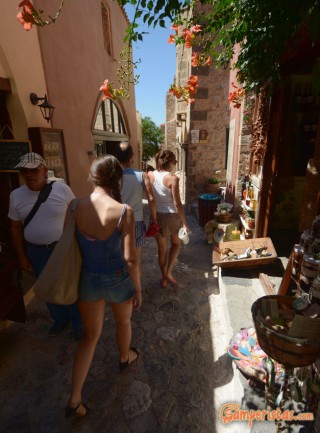
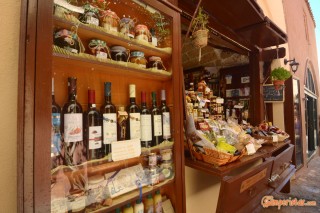
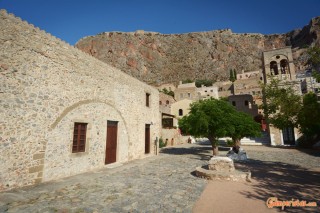
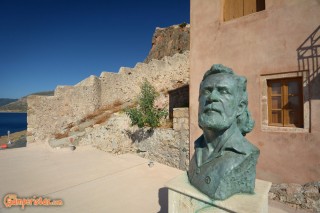 Book lovers will be happy to know that Monemvasia was the birthplace of Yiannis Ritsos, considered one of the greatest Greek poets of the twentieth century. In the photo on the left you can see his home.
Book lovers will be happy to know that Monemvasia was the birthplace of Yiannis Ritsos, considered one of the greatest Greek poets of the twentieth century. In the photo on the left you can see his home.
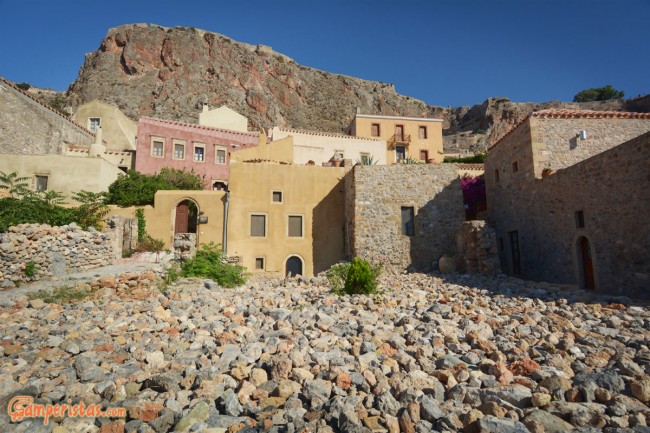
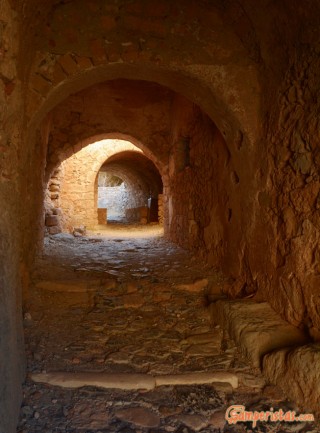 For those who are in the mood for walking, it’s really worth the climb-up to the old town (about 15 minutes).
For those who are in the mood for walking, it’s really worth the climb-up to the old town (about 15 minutes).
The views of the fortress and the church of Agia Sofia reward the fatigue of the hike. It’s better to do it early in the morning so to avoid the heat and to wear the right shoes.
Be carefull, it’s slippery 😉
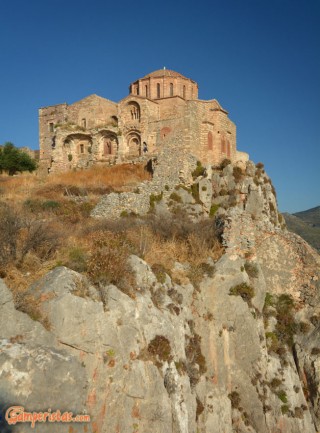
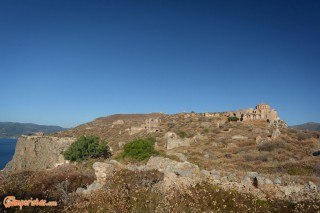
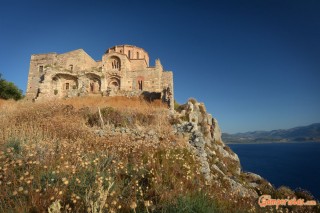
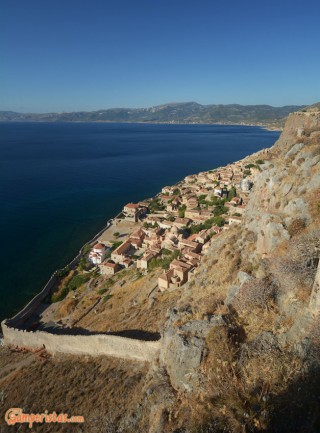
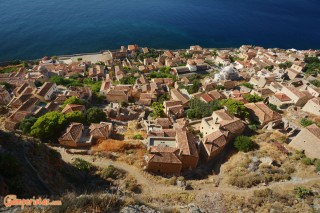
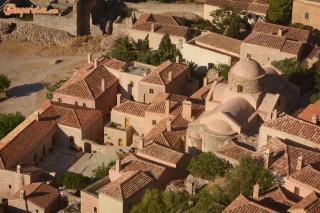
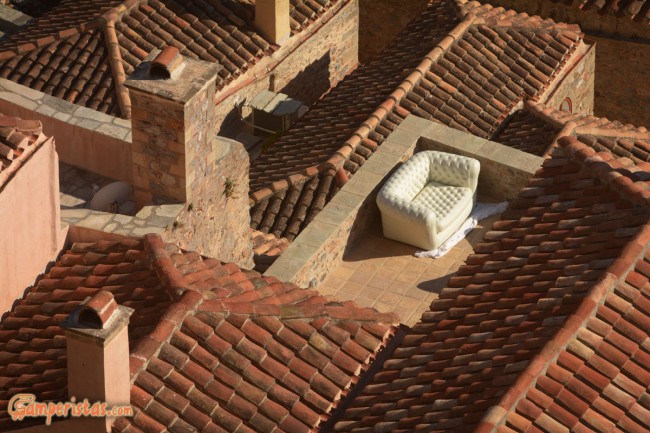
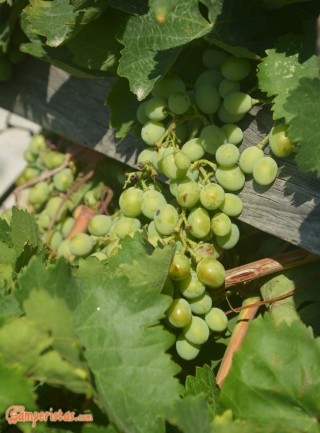
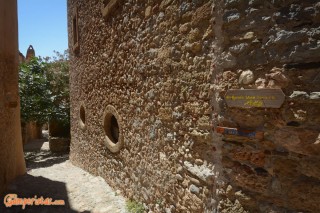 The Franks called Monemvasia Malvasia; they gave the same name to the local grape variety for which Monemvasia has been famous since medieval times. The Malvasia wine, sweet and aromatic, was greatly appreciated in the medieval courts of Europe.
The Franks called Monemvasia Malvasia; they gave the same name to the local grape variety for which Monemvasia has been famous since medieval times. The Malvasia wine, sweet and aromatic, was greatly appreciated in the medieval courts of Europe.
You can taste and buy local wines both in the fortress (photo above) and in the surroundings.
Below: if you are on the road to Neapolis, you can stop at Liotrivi, an old oil press, where you can buy local wines and olive oil products directly from the producer [GPS N 36.71124, E 22.94644]. Note that the farm and the mansion belonged to the Ritsos family and the poet spent here his childhood.
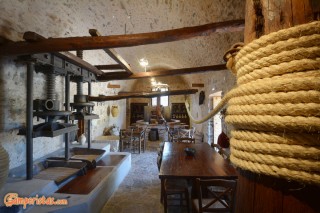
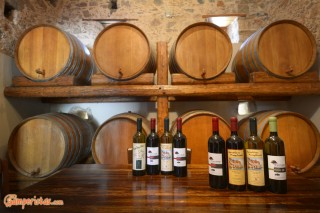
For those whising to eat in a restaurant inside the fortress, the well-known taverna Matoula is still recommanded by the locals as the best choise.
And talking about gastronomy, you should absolutely try Amigdalotà, sweets made according to a traditional recipie with almonds, butter, sugar and egg whites. The best are those made by Haramis. His pastry shop is not far from the car park on the main road of New Monemvasia.
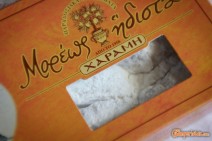
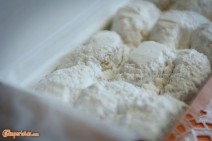
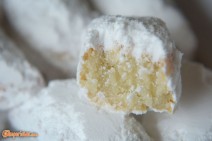
We stayed overnight at the parking lot near the bridge [GPS N 36.68847, E 23.03671] in the company of 5 other campers of different nationalities. It’s prohibited, however, to park there Saturday morning because it’s used for the weekly market.
It’s very convenient because the nearby beach is equipped with chemical toilet, shower and water tap. What’s more, the municipality of Monemvasia offers free Wi-Fi!
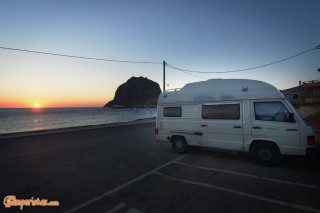
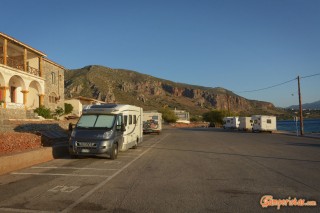
Agios Fokas, about 14km to the south, could be an alternative option for an overnight stay with beautiful views of the fortress. [GPS N 36.59478, E 23.060393]. It’s a very quiet place and although the beach was not so clean, the water was still crystal clear.
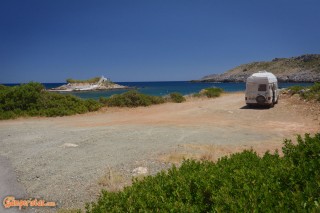
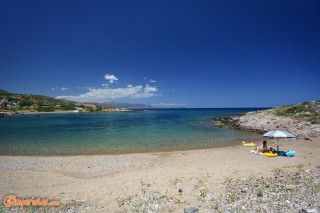
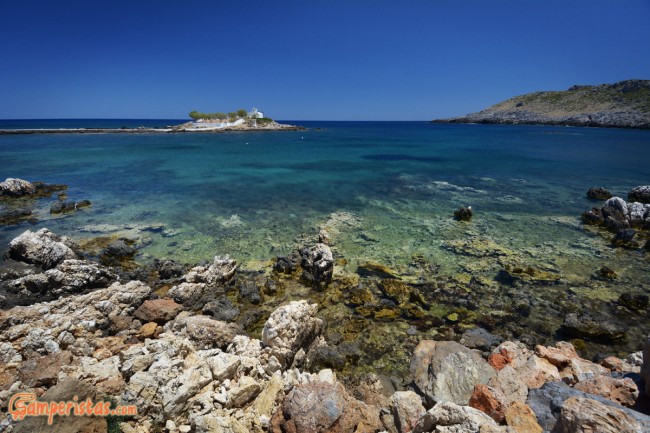
[sam id=”7″]
